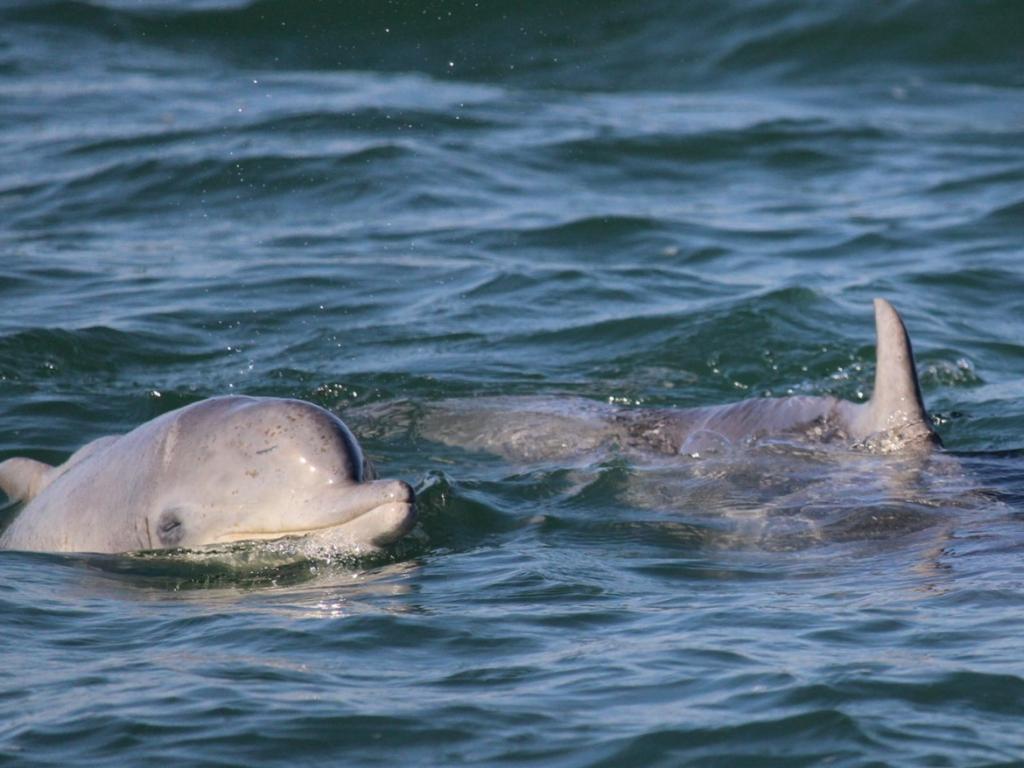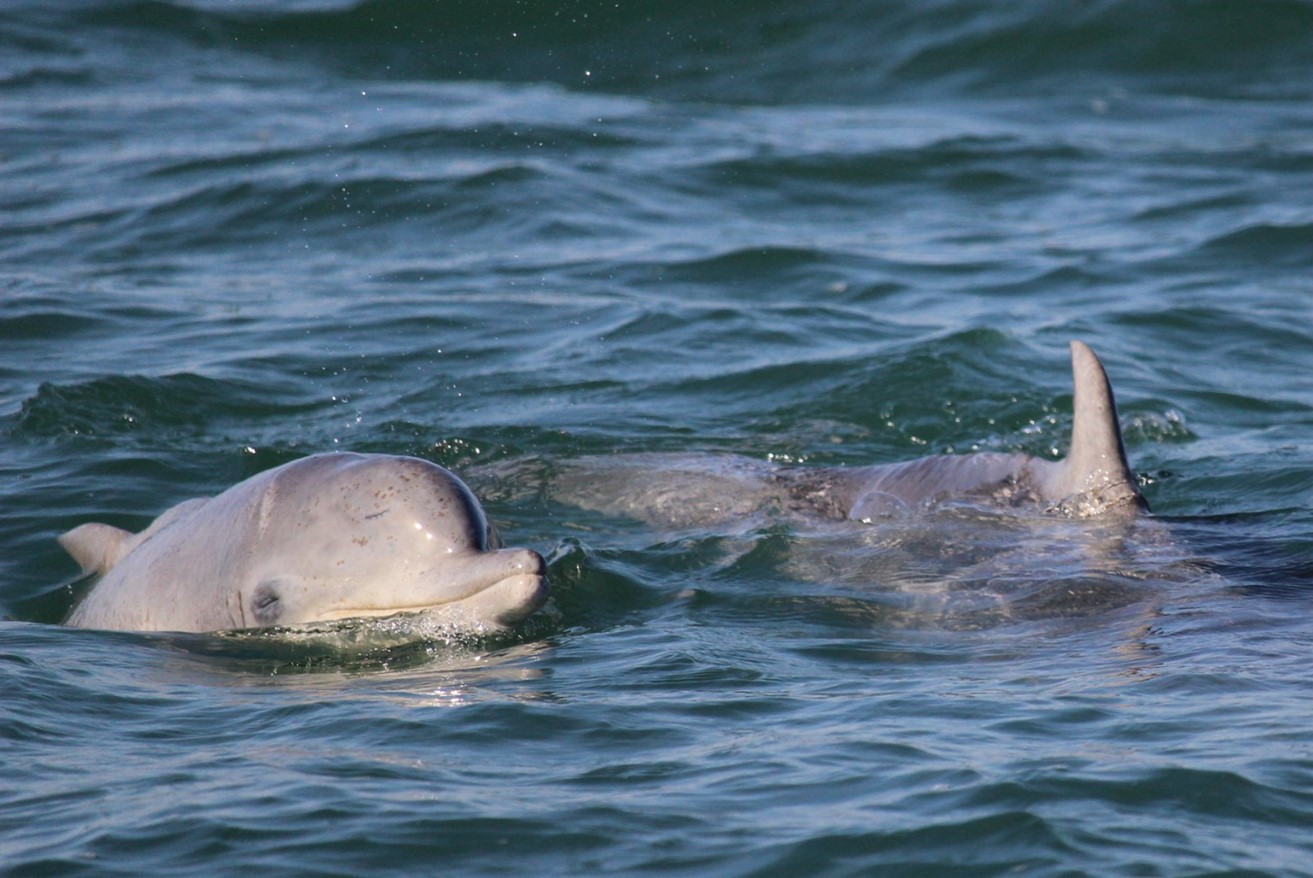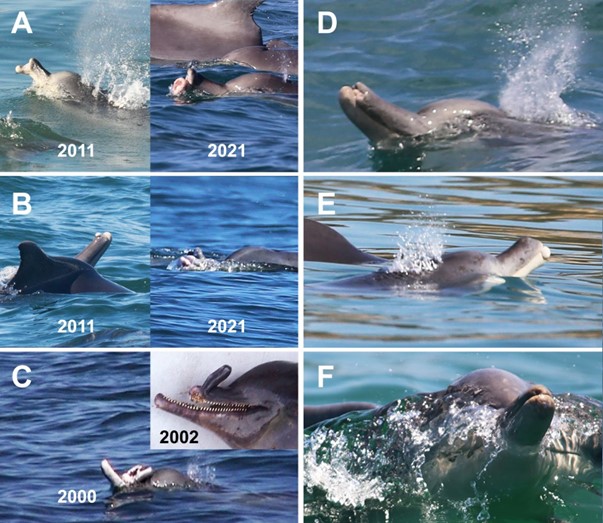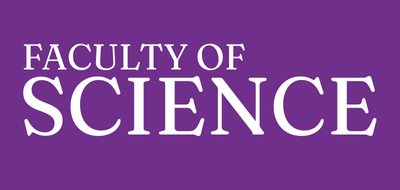Endangered humpback dolphins more vulnerable than previously thought in South African waters


A recent study published in Integrative Zoology demonstrated a high incidence of abnormal beak (rostrum) conditions in South African humpback dolphins, highlighting a previously unreported threat to this endangered population.
Dr Guilherme Frainer, lead author and post-doctoral fellow at the University of Cape Town (UCT) and Sea Search Research and Conservation, found 31 different individuals with unusual rostrum conditions, varying from slight misalignments to severe wounds. Most of the cases were characterised as natural injuries, potentially caused as they hunt amongst reefs or from interactions with sharks.
“Although most cases were potentially natural causes, we did see evidence of human impacts on these abnormal rostrums, as one individual still had a fishing line attached to the base of the melon, clearly showing an injury caused by human impacts,” describes Frainer.
Combining photographs and sightings from the last 20 year from across the species range in South Africa from Richards Bay in the east to False Bay in the west, the authors were able to show the high resilience of some dolphins that survived over 10 years with their injuries.
Dr Simon Elwen, a co-author on the paper and co-director of Sea Search Research and Conservation, said “The fact that these animals have managed to survive for such a long time and some have even successfully raised calves, shows the incredible resilience and adaptability of these animals”.
Over the past few years, the team from Sea Search Research and Conservation have been working with the humpback dolphin population around South Africa, adding to the national Photo ID catalogue to assess population health around South Africa.
“Across our research, we were focused on collecting additional dorsal fins to identify individuals. Over this time we were unable to determine the exact cause of the abnormal rostrum conditions presented here,” explains Sasha Dines, a PhD candidate working with humpback dolphins in South Africa.
It is suspected that multiple factors may be involved such as their skull shape, i.e. slender and thin beak; negative interactions with sharks and other dolphin species or due to their reef-hunting strategies. Humpback dolphins also have the highest pollutant level of any marine mammal in South Africa and so these abnormalities could potentially be due to the high exposure to contaminants in their bodies.
The total number of animals assessed in this study represents about a quarter of the population size for South Africa, with the incidence of abnormal rostrums in humpback dolphins comparatively higher than other species. The authors stress that the number of dolphins with abnormal conditions is likely to be underestimated here as not all individuals included in the national photo ID catalogue had their rostrum photographed.
Humpback dolphins are the only resident marine mammal in South Africa listed as endangered according to the IUCN Red List. To better understand the prevalence of these cases across their national range, the authors invited members from the SouSA Consortium to contribute data and sightings.
The SouSA Consortium was formed in 2015 by researchers and conservationists in South Africa to work together to better conserve this threatened population. Recently, the consortium reported an estimate of less than 500 individuals left in South African waters with numbers potentially decreasing. “Their main threats include degradation of inshore habitats, water pollution, boat traffic, shark-nets, coastal development, overfishing and climate change,” said Dr Tess Gridley, Project PI and supervising co-author.
“This work, funded by the National Research Foundation, is part of a longer -term study, combining photo-identification and passive accoustic monitoring to detect this elusive species along our coastline. Overall we hope to track the occurrence and movement of dolphins using their naturally produced signature whistles which act somewhat like a name in dolphin society. In the future, we aim to calculate population abundance and density by eavesdropping in on their underwater conservations,” said Dr Gridley.
The authors provided evidence that the species might be even more vulnerable than previously thought. This study was possible due to the collaboration of the SouSA consortium members, led by Dr Gui Frainer, involving multiple institutions in South Africa. In looking at the high incidence of abnormal rostrum conditions in humpback dolphins across their national range, the study was able to highlight the importance of assessing the impacts of this phenomenon on population health, as well as the necessity of mitigating current threats on this endangered species.

